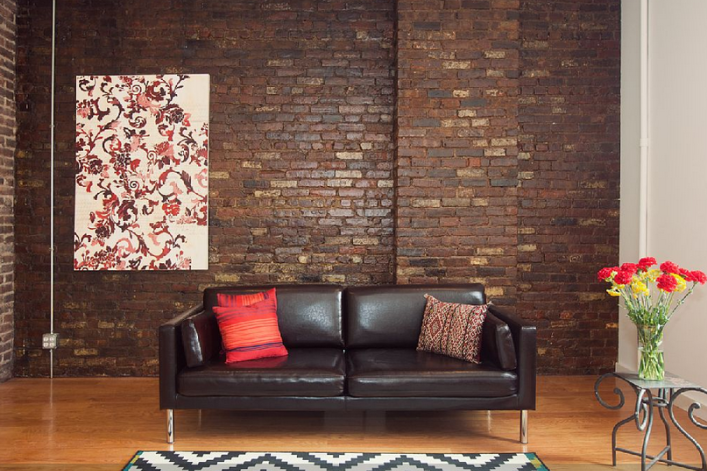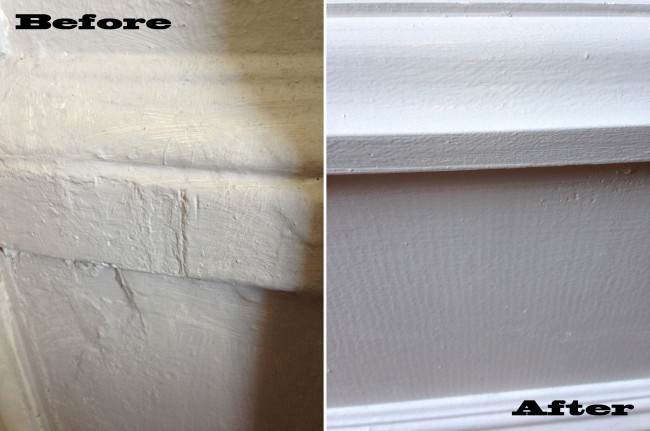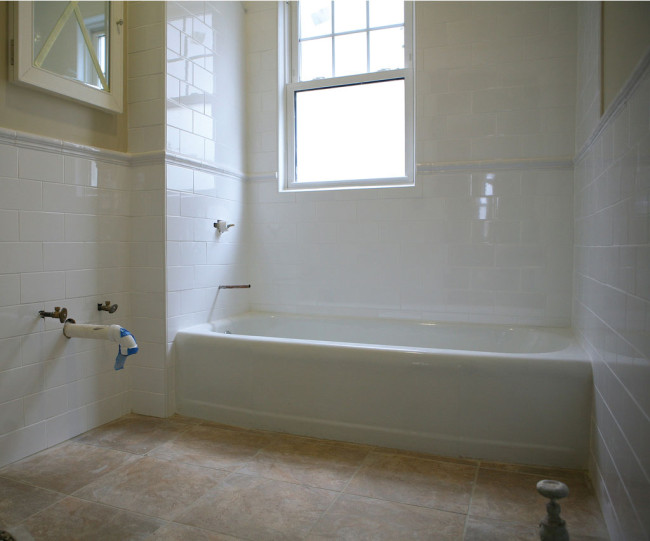Exposed brick walls: How to hang a picture on it, paint, and more

If there's anyone out there who doesn't love the look of exposed brick, we have yet to meet them. Whether you're settling into a space with four walls of them or have a single one breathing life into the look of your apartment, it seems that brick is a perennial charmer, and with good reason. Nothing lends a space quite as much character, or looks quite as homey, as brick walls. And in a city with an ever-growing roster of ultra-modern new developments, it's a welcome visual change of pace.
Still, brick walls have their own particular set of requirements (and pose occasional challenges).We've consulted the experts on the most common questions that come up when dealing with brick, from the logistics of decorating to keeping out, shall we say, unwanted guests.
How do I hang a picture?
While a brick wall is a kind of decoration in its own right, no one would blame you for not wanting to leave it blank and untouched. Before you dive right in, though, you'll want to make sure you're doing things the right way.
Any holes should go into the mortar between the bricks rather than the brick itself, says Prime Renovations owner Jeff Streich. You'll also need to expand your toolkit to include some brick-centric materials, since a regular hammer and nails can cause mortar to crumble. Rule of thumb: Look for products with "masonry" in the name, including masonry drill bits, which are specially designed to be strong enough to bore into this type of surface (as opposed to, say, regular drill bits you might use on wood or Sheetrock).
After that, Crown Design and Consulting president Michael Santora recommends using anchors and screws that, like the drill bits, are made specifically to work on brick walls. Sleeve anchors work to hang lighter material like small mirrors or canvas paintings, he says, and lag shields or double expansion anchors are good for more heavy-duty hanging, say for a wall-mounted TV. After drilling anchors into your holes, go ahead and install a Tapcon screw (also designed to work with masonry), and you're all set to hang.
Unfortunately, this advice really only applies to owners. Even careful hanging takes its toll on mortar, and Streich tells us, "I wouldn't recommend it for renters, ever." If you make a hole and then patch it up, you'll have mortar that's two different colors. "You can't just repair it" and have the wall go back to the way it was, says Streich.
If you're not eager to drill a hole, brick clips—which clamp onto the edges of the brick itself and come with a hook attached—are an option. But again, brick is sensitive, so if you're in a rental, it's probably wise to hold off.
In other words, you have a choice: your decorating scheme or your security deposit.
Can I paint it?
If you'd like your brick wall to be, um, a little less brick-colored, it's definitely an option, but first, you'll need to assess the condition of the wall. If it's crumbling or deteriorating in any way, Santora says, you'll have to repoint before you paint, an involved process of chiseling away damage and adding new mortar in between the bricks.
After making sure the wall is scrubbed clean and dry, Santora recommends priming with a brick-friendly masonry primer, which will help with water resistance. "Remember, brick often looks best painted in a slightly glossy finish, which highlights its detail better than a matte one and makes it easier to wipe clean. Use a 100 percent acrylic paint and roll or spray on one to two coats of your chosen color. Paint and primer is best applied with a sprayer."
If you don't have a sprayer on hand, he suggests using a paint roller with a long nap (this is the soft part of the roller that you actually use to apply the paint). "Press hard while applying," Santora notes, and when you get to the edges of the wall, switch to a stiff brush for the rest of your painting.
What about when there's too much paint?
If the previous owners or tenants glommed on paint you're not crazy about, the best option is to sandblast it right off—but the messy, harsh process "isn't realistic in all scenarios," says Santora, and is generally saved for work on outdoor walls.
Inside, he says, opt for over-the-counter paint thinners containing muriatic acid, which will remove the paint without harming the original brick. One major thing to keep in mind, for the safety of both you and your home: He says "the biggest mistake people make is not properly ventilating the space or protecting other areas" when using strong, chemical paint thinners, so keep your furniture and floors covered, and your windows wide open.
And again, this is a process for owners only. "I wouldn't paint or remove paint [on brick] in a rental unless you don't have a problem losing your security deposit," warns Streich.
Above, a "band" like the one on the right-hand wall is an easy way to avoid having a brick wall full of wires
What do I do with all my wires?
Hoping to install lighting, speakers, or anything else that'll require running a lot of wires across the wall? It's worth looking into having a contractor or architect install something called a band (see above)—a rectangular, mounted structure that runs the length of the wall and can serve as both a home for unsightly wires and a means of hanging lighting or another fixture. (It can also become a decorative feature in its own right.) Streich notes that these also work well for walls with windows in them, and as an easy place from which to hang shades.
5. Is there any added risk of pests?
In theory, there shouldn't be, but in reality... sometimes.
"Brick does an excellent job of keeping things out as long as it’s completely structurally intact," explains Gil Bloom, president of Standard Pest Management. "Once it starts to deteriorate, that image of it being impenetrable crumbles along with the wall. And the bigger the hole, the bigger what can get in."
With exterior brick walls, Bloom says "moisture pests" like springtails and beetles are a risk when bits of cement or mortar are missing, and you'll need to bring in someone to repair the area in question before the situation escalates.
If you're in an older building, you'll also want to inquire about the state of fire walls and the other material in between the walls of your apartment and your neighbors': If it's been allowed to deteriorate, it creates an opening for bed bugs to spread from unit to unit.
Bottom line: An ounce of prevention is worth a pound of cure here, so keep your walls patched up before something decides to take up residence in them.
Will I boil in the summer (or freeze in the winter)?
Though we've occasionally heard rumblings about brick walls affecting an apartment's temperature—keeping things too cold in the winter or hot in the summer—Santora says this shouldn't be an issue.
"Brick is never the entire portion of the wall, although it has fair insulative properties. The real protection comes from the insulation of the wall assembly," he says. Before you buy, double-check with the seller that the wall was built with continuous insulation with an "R-value" of 12 or greater (this is the rating used in construction to determine a wall's thermal resistance).
If you are running into temperature problems, he says, "Remember the biggest losses are at the openings, so the real culprit may actually be the doors or windows in your wall, not the brick itself."
What happens if water gets in?
You Might Also Like




























